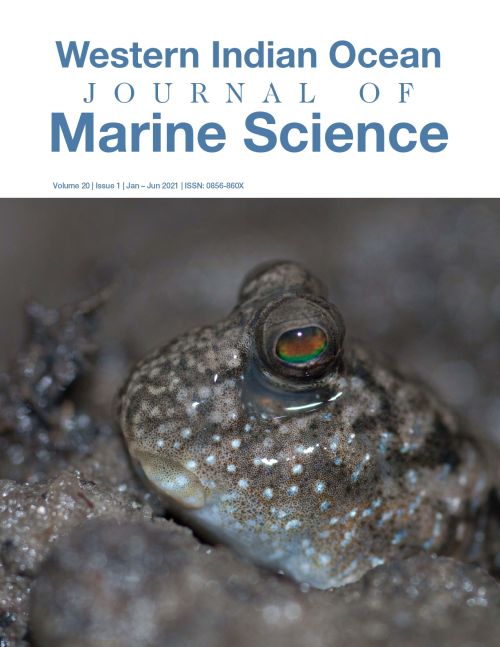Main Article Content
First evaluation of coral recruitment in Madagascar
Abstract
The distribution of larvae and recruitment of scleractinians in the southwest region of Madagascar were evaluated for the first time between October 2013 and September 2014 at 3 sites. The presence of coral larvae (planulae) was monitored through weekly sampling using a plankton net and the recruitment rate evaluated by monthly sampling of the newly settled corals (<1 year stage) on recruitment tiles and by a monitoring of the recruitment of juveniles (1< Juveniles < 2 years) using the quadrat method. Planulae were present in the plankton for 9 months during the survey. The recorded mean annual density of planula varied from 0.43 ± 0.41 larvae m-3 to 3.23 ± 5.72 larvae m-3 depending on site, with a peak in larval density towards the end of November and the beginning of December. The variability in the occurrence of planula is very high and implied that the density observed in the year does not present a significant difference between the sites (pKW=0.33). The average density of total recruits was 620.13 ± 621.30 recruits m-2, 40.28 ± 50.97 recruits m-2 and 36.34 ± 33.82 recruits m-2, respectively at the sites of Nosy Tafara, Grande Vasque and Rose Garden. Seasonal distribution of coral recruitment was different between the sites. The mean annual density of newly settled recruits (< 1 month stage) was significantly higher at Nosy Tafara with 94.91±101.08 recruits m-2 compared to Grande Vasque and Rose Garden with 18.75±34.32 recruits m-2 and 11.57±18.47 recruits m-2 (pKW<0.001), respectively. The highest density of newly settled recruits was observed between October to December. Higher density of recruits was also observed in March at Nosy Tafara and in May at all three sites. Results of juvenile monitoring showed high rates (> 10 juveniles m-2) compared to other regions and the threshold, but it revealed high mortality among recruits. Coral recruitment in the southwest region of Madagascar was found to be high and could result in increased resilience of the coral reef assemblages.






